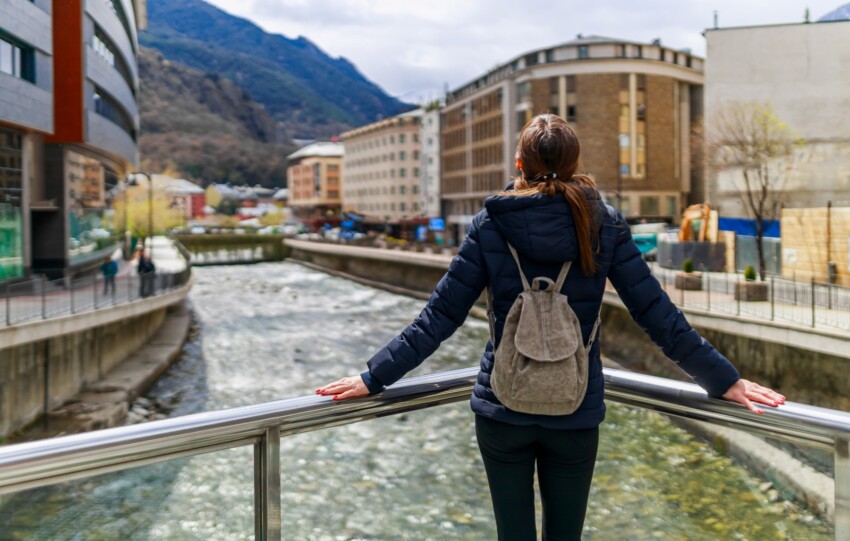

Andorra, have you ever thought about it? Probably not, because few travellers remember this small country set like a gem between Spain and France.
However, this does not mean that tourism in Andorra is undeveloped, on the contrary: when the heat gets unbearable, people from Barcelona and many other cities in northern Spain flee here in search of fresh air, green meadows, trails and MTB routes, tasty and invigorating mountain cuisine and medieval churches. The French follow their example.
In winter, all covered in snow, Andorra is a real gem: a romantic and atmospheric destination for those who dream of cosy fireside evenings and relaxing thermal baths, but also perfect for those who want an active holiday on and off the ski slopes.
Summer, winter, but also spring and autumn: Andorra has something for all seasons. Small enough to be easily circumnavigated (only 40 km from one point to another), it has enough attractions to keep you busy for a week or more.
Some are record-breaking attractions, such as the world’s largest ski resort or Europe’s largest thermal park. Andorra can also boast of having no less than three natural parks (Valle de Sorteny, Madriu-Perafita-Claror and Valles del Comapedrosa) in such a small area.
But Andorra does not need to flaunt its primates to promote itself. Andorra’s remote location in the Pyrenees and lack of mineral resources or other natural riches have meant that this strip of land has never been a magnet for anyone. As a result, Andorra has enjoyed uninterrupted peace for more than a thousand years and its relaxed atmosphere is immediately noticed by all visitors, triggering a word-of-mouth that gradually increases its popularity.
It is a modern country, with low taxation that appeals to many entrepreneurs, yet at the same time it maintains centuries-old customs that are rather unusual today, such as the election of two honorary princes who are not natives of Andorra (one is the French president, the other is a cleric elected by the Vatican state).
On tradition and entrepreneurship Andorra has based its recipe for success on tourism as a primary resource. A few more years and no one will ask “Andorra… where is it?”.
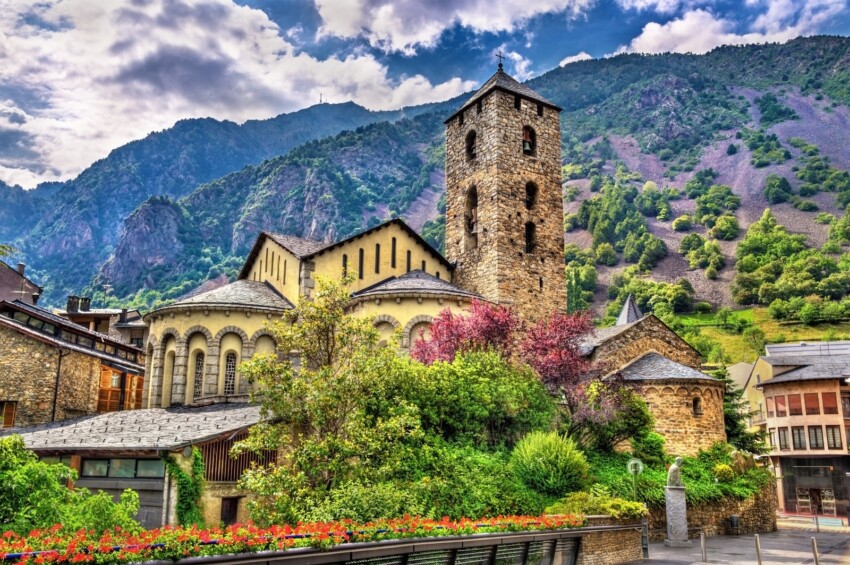
Andorra la Vella1 is the capital of Andorra and is a pretty city that combines mountain charm and urban vibrancy. Although it is one of the smallest capitals in Europe, it can boast of being the highest in Europe, situated at an altitude of 1023 metres.
A good starting point to get to know the city and the state of Andorra is the characteristic Casa de la Vall, built in the second half of the 16th century for a wealthy local family and used as the seat of parliament from 1702 to 2011. It is a beautiful stone building, well integrated with the surrounding landscape; the interior, although not as opulent as a princely castle, has a noble and proud appearance.
The guided tour of Casa da Vall lasts only half an hour but is highly recommended as it gives you an insight into the fascinating history of this small state nestled in the mountains.
As you leave the building, take some time to explore the narrow streets of Barri Antic, Andorra La Vella’s fascinating historical quarter. Strolling through these cobbled streets lined with traditional stone houses will feel like travelling back in time and experiencing the era when this town was little more than a village. The district is full of historical buildings: among the most beautiful are Casa Guillemó, Casa Felipó and the old Vilanova clinic building.
For splendid panoramic views of the city and mountains, climb up to Plaça del Poble, a square that occupies the roof of a government building and is a popular meeting place for locals. It can be comfortably ascended in a lift, without any effort!
The most important church in the centre of Andorra La Vella is the Església de Sant Esteve, built in the 12th century but of which unfortunately little original remains (it has been almost completely renovated in recent years). However, a beautiful view remains, and you can admire stained glass windows and an apse decorated with frescoes. Also take a look at the Església de Santa Coloma, the oldest in the country.
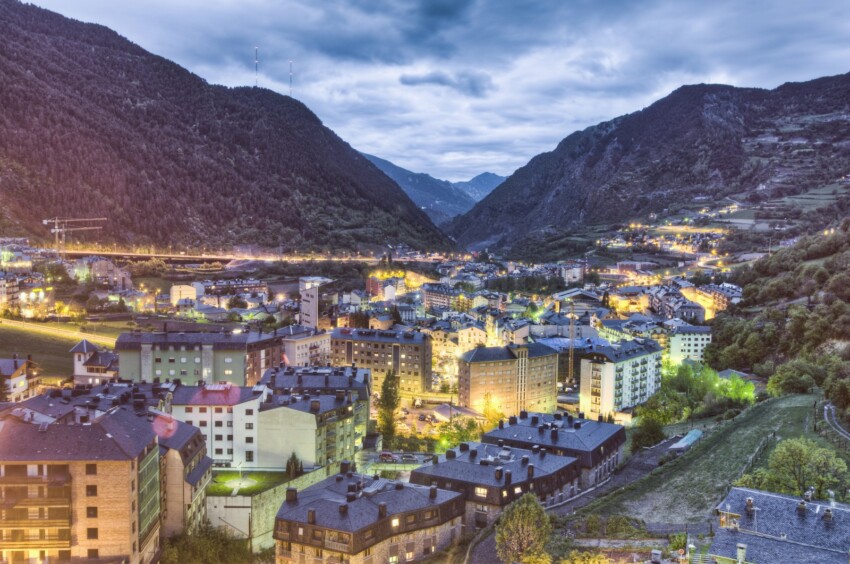
Leaving the capital behind, Andorra is a small world to discover made up of charming stone churches, spas with mountain views, retro museums, adventure parks surrounded by greenery, and rural houses that tell the long history of this valley. Are you ready to go? Here are the things to see in Andorra.
As many as 40 mediaeval churches are scattered throughout the Andorran valley. They are generally small and humble, in Romanesque or pre-Romanesque style, but very impressive because they are set in a magnificent natural context.
A visit to one or more of these pretty little mountain churches is an absolute must during a holiday in Andorra; the most beautiful are Sant Climent de Pal2, Sant Miquel Engolasters3, Sant Antoni de la Grella4, Santa Eulàlia d'Encamp5 and Sant Serni de Nagol6.
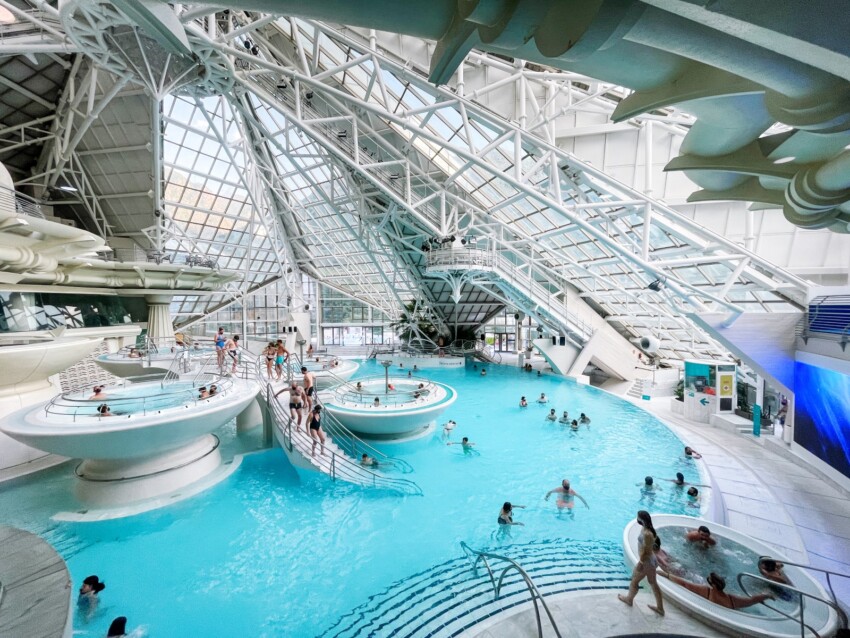
If relaxation and wellness are the reasons for your visit to Andorra dedicate a day of your holiday to Caldea Spa, a modern temple of wellness.
Built on the site of a natural thermal spring, it is a huge spa complex with contemporary architecture that can boast of being the largest spa in Europe: it has indoor and outdoor pools and tubs on no less than 18 floors! There are family-friendly areas perfect for those travelling with children and adults-only areas for those seeking total relaxation.
The spa is open until midnight and, thanks to the futuristic glass roof, you can admire the starry Pyrenean sky even if you stay indoors.
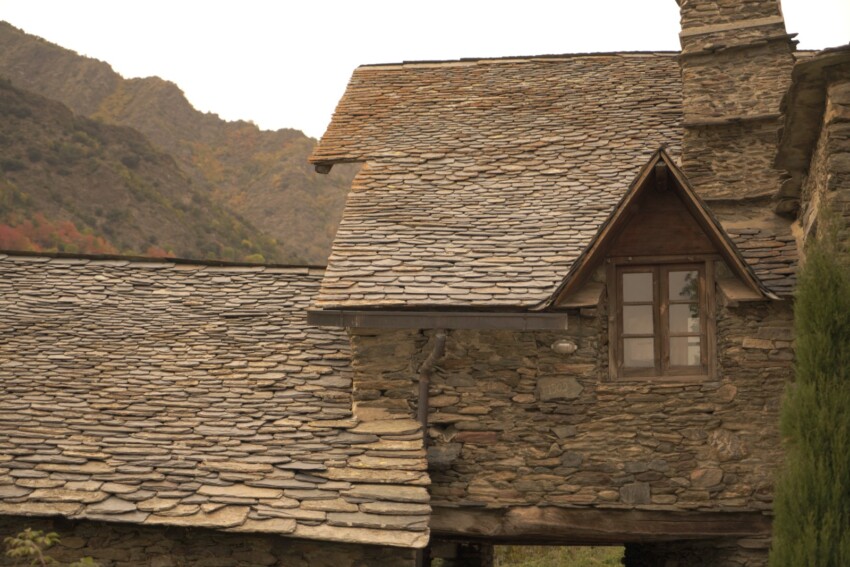
An original and fascinating way to explore the state of Andorra and discover its customs and traditions is to follow the ItinerariHàbitat Rural, an ethnographic route that connects three magnificent house museums:
You will be able to see all the rooms and imagine what daily life was like for the inhabitants of these areas until the early 20th century; the three houses will also give you an idea of the differences in the living conditions of inhabitants from different social classes.
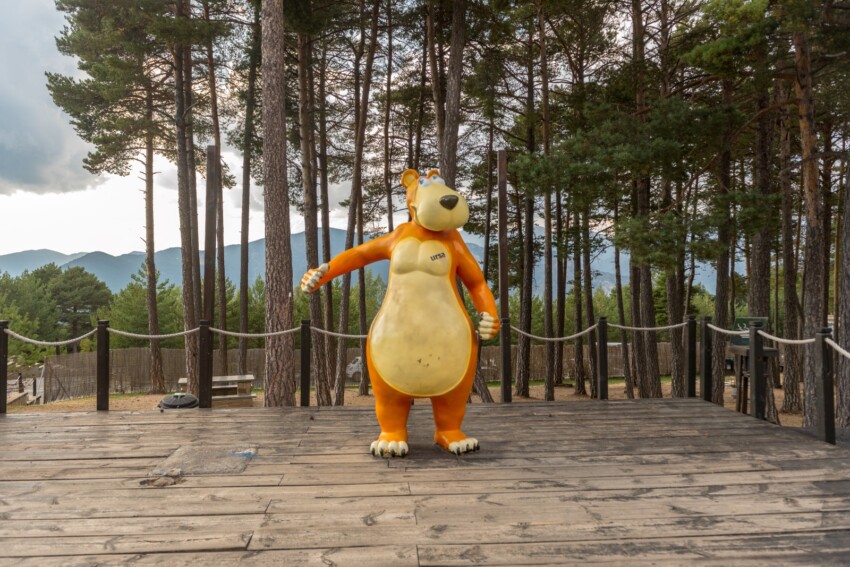
An amusement park immersed in the enchanting natural scenery of the Pyrenees that allows you, in a single day, to enjoy adrenaline-pumping experiences and see wild animals in their natural environment: a dream? No, it is Naturlandia, the amusement park for all ages in Andorra.
Located in Sant Julià de Lòria, it covers an area of 800 hectares, all within a forest but divided into two areas, one at 1600 metres above sea level and the other at 2000 metres. You will be able to admire (safely!) typical local fauna, such as wolves, bears, lynx, deer, marmots and ibex.
After this exciting experience, give vent to your desire for adventure with the park’s many attractions, including: Tobotronic, the world’s longest toboggan run; AirTrekk, a 13-metre high obstacle course; Xtreme Jumps, a giant inflatable platform that allows you to jump from a height of 2 or 4 metres. There are also more relaxing activities, such as pony rides, archery and children’s make-up workshops.
If you are a classic car fan, don’t miss the Museu Nacional de l’Automòbil about 6 km north-east of the capital. On display are 80 models of cars and motorbikes with irresistible vintage charm; there is also a section dedicated to bicycles.
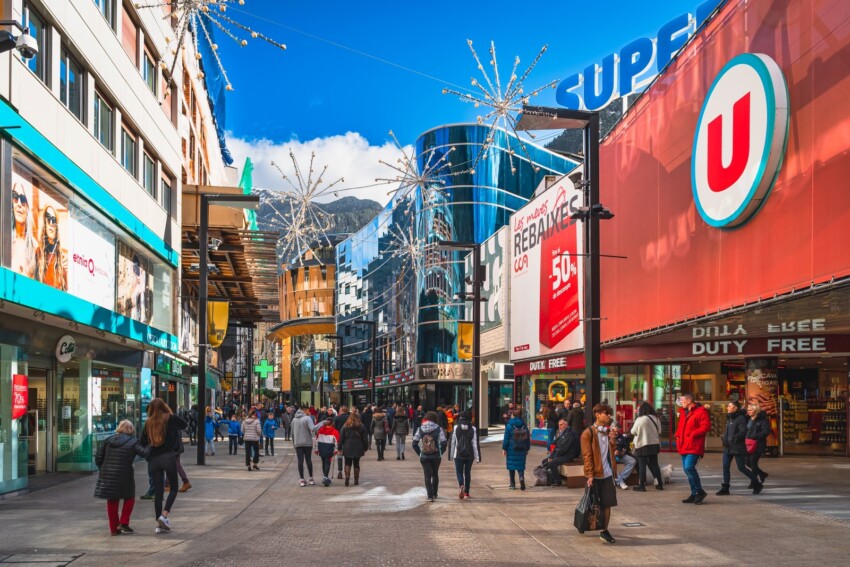
Andorra’s taxation is one of the lowest in Europe, so shopping in Andorra is particularly convenient.
This is well known by the French and Spaniards, who periodically organise a day trip or weekend break to Andorra to stock up on cigarettes and alcohol, but also clothes and technology products. This influx of tourists has led to a development of commerce and today the number of shops and shopping centres in Andorra is impressive.
Almost all the shops are concentrated in the capital: if you love shopping malls or if you want to shop on a rainy day at the Pyrenees department stores, you will find the shops of international chains; the historical centre is full of boutiques and jewellery shops, the right place to do some value shopping.
The majority of tourists who do not come to Andorra for shopping come for outdoor sports, both in winter and summer.
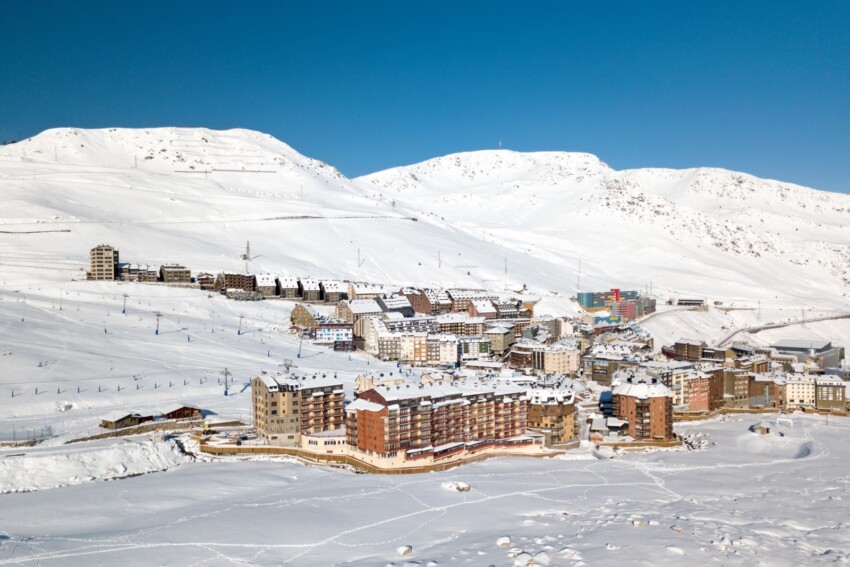
For ski lovers Andorra is a little paradise. The average altitude is 2,000 metres, with peaks of up to 3,000 metres, so it is a mountain country that can hold its own against more prestigious destinations such as Austria or Switzerland. One of the largest ski resorts in the world is located here: it is called Grandvalira13 and has an impressive number of slopes (118!) totalling 210 km.
The other major ski complex in Andorra is Vallnord14, which brings together two formerly separate facilities (Pal Arinsal and Ordino Arcalis) and has 66 slopes with a total of more than 90 m of downhill runs.
Both Gran Valira and Vallnord are open until late, giving tourists the opportunity to practice sports and activities at night.
Other winter sports that can be practised in Andorra besides downhill skiing are snowboarding, cross-country skiing, ice skating and snowshoeing.
Those who want to enjoy the snow with little effort can opt for an electrifying ride in a snowmobile or a thrilling ride in a dog sled (mushing). For a few hours of fun in the snow, also try tubbing, i.e. jumping off the slopes with inflatables that look like huge life preservers.
When the snow melts, the tourists’ attention shifts from the ski slopes to the green meadows and paths leading to the high mountains, to be enjoyed on foot or by bike.
Mountain bikers can experience the thrill of jumping off the MTB world cup tracks at Bike Park de Pal Arinsal15 or choose from one of the many MTB trails in the area: there are ones for all levels, from professional to absolute beginner.
Do you prefer road cycling to mountain biking? There is fun for you too! The territory of Andorra has 21 passes: particularly impressive are those of Arcalís, Arinsal and Cabús, which will take you into the heart of the Pyrenean landscape. You can ride the roads beaten by the champions of the Tour de France and the Vuelta, which often include a stage in Andorra.
Those who do not like cycling and prefer the slow pace of their steps can indulge in easy walks and hikes with overnight stays in a refuge.
In the following map you can see the location of the main places of interest mentioned in this article.
Tourism is the main economic activity in Andorra, which for many years now has developed a strong hotel industry. The choice of hotels, B&Bs and holiday flats is very wide and prices are good.
Being a Pyrenean resort, in addition to 3-4 star hotels similar to those you can find in other cities (including modern hotels of international chains) there are also typical mountain facilities such as ski hotels, refuges and campsites. Even among the hotels, you can choose between modern or rustic, Alpine-style facilities with stone walls and wooden furniture.
Accommodation in the capital generally costs a little more, but those who choose to stay in Andorra La Vella can count on all the amenities of a city, including numerous bars and restaurants. Don’t expect to find a wild nightlife, but there is something to do for the evening here.
If you prefer to immerse yourself in nature, look for your hotel in the villages scattered around the valley. They cost less and have spectacular views; the disadvantage is that you may need your car for small daily expenses. Hotels close to the ski slopes have very low prices in summer: if you don’t mind having to use your car every day, they are a good way to save money.
Those who want a holiday of nature and relaxation or those who are looking for something more luxurious can count on numerous 4- or 5-star spa hotels with an outdoor pool and wellness centre.
Andorra does not have an airport and can therefore only be reached by land.
There are no less than six international airports within a radius of 200 km, three of which are in France and three in Spain: Toulouse-Blagnac (TLS), Carcassonne (CCF), Perpignan-Rivesaltes (PGF), Girona-Costa Brava (GRO), Barcelona-El Prat (BCN) and Reus (REU).
The easiest way to get to Andorra is to fly to one of these airports and from there continue with a rental car. Spanish airports offer more choice of low-cost flights, especially Barcelona airport.
Despite being in mountainous terrain, it is easy to get to Andorra by car because the roads are in excellent condition. From Barcelona airport to the capital Andorra La Vella takes about two and a half hours, while from Girona it takes even less.
Reaching Andorra by public transport, however, is quite complicated because you will have to make numerous changes. If you don’t want to drive, you can visit the small state on a day tour from Barcelona.
The small state of Andorra is not part of the European Union, but identity cards are accepted as documents for border controls, although it is always advisable to travel with a passport. There is also no national bank: the local currency is the euro, so you won’t have the hassle of having to change your money.
The fact that Andorra is not an EU country has some consequences that you should bear in mind before travelling:
The official language of Andorra is Catalan, but practically all citizens speak fluent Spanish and French.
The time zone is the same as in Spain and France. The area code for calling a number in Andorra from abroad is 00376.
What's the weather at Andorra? Below are the temperatures and the weather forecast at Andorra for the next few days.
Andorra lies nestled between the Pyrenees, between Spain and France. It is located in the north of Catalonia and can be reached from Barcelona in a couple of hours by car.